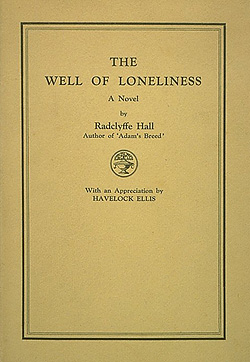Reading Material
"[Lady Chatterley's Lover] is, to say the least, a powerful aphrodisiac and I have it on the personal testimony of one who lisps that its descriptions of the normal sex act could do more than the arts of psychoanalysis to make an erring homo renounce his red tie and begin annoying women."--Merle Macbain to Leo Adams, October 12, 1929.[1]
In the early-to-mid twentieth century, before the existence of an active gay press or bookstores, gay men and lesbians necessarily relied on word of mouth and the sharing of books and periodicals among circles of friends for gay-themed reading material. Leo Adams's letters are a rich source of material about what he and his friends were reading from the late 1920s to the years immediately following World War II--a period that witnessed significant changes in both the quantity and the style of popular gay and lesbian literature. Adams's most remarkable correspondent in this regard is Merle Macbain, editor of The Greater Chicago Magazine in the late 1929s, and later a Commander in the United States Navy who served as a technical adviser in the 1955 film Mister Roberts. Perhaps most remarkable about their literary relationship is that Macbain, a straight, married man who boasts of having slept "with at least 300 women,"[2] takes such an active interest in Leo Adams's gay reading list. In many ways, Macbain was a more progressive--more queer, even--reader than Adams, whose taste in imaginative literature ran towards The New Yorker and The Saturday Evening Post. As the passage quoted at the top of this page suggests, Macbain was familiar with the language and codes of the emerging queer subculture of the late 1920s,[3] also suggesting that the boarder between gay subculture and mainstream popular culture was already becoming porous.
Adams did read Radclyffe Hall's The Well of Loneliness and recommended it to Macbain. That letter is not among Adams's papers, but Macbain's, with his critical commentary, is:
- My dear Leo:
- Yes – I have read “Well of Loneliness” and I am willing to testify that if Miss Radcliffe [sic] Hall can love like she can write she is certainly not sex starved. From beginning to end the book is a rhythmic pleasure, and approaching it as I did from a wholesomely normal and purely impersonal viewpoint I probably appreciated it even more than you did. Yours as ever / Merely Merle
Notes
- ↑ Leo Adams Papers, New York Public Library
- ↑ Merle Macbain to Leo Adams, January 1932. Leo Adams Papers, New York Public Library (hereafter cited by name and date only).
- ↑ The red necktie had, by the 1920s, become a recognized signifier of homosexual identity. See, among others, George Chauncey, Gay New York: Gender, Urban Culture, and the Making of the Gay Male World, 1890-1940 (New York: Basic Books, 1994), 522; and Shaun Cole, "Macho Man: Clones and the Development of a Masculine Stereotype," Fashion Theory 4 (2000): 126
Back to Leo Adams: A Gay Life in Letters, 1928–1952 <comments />
